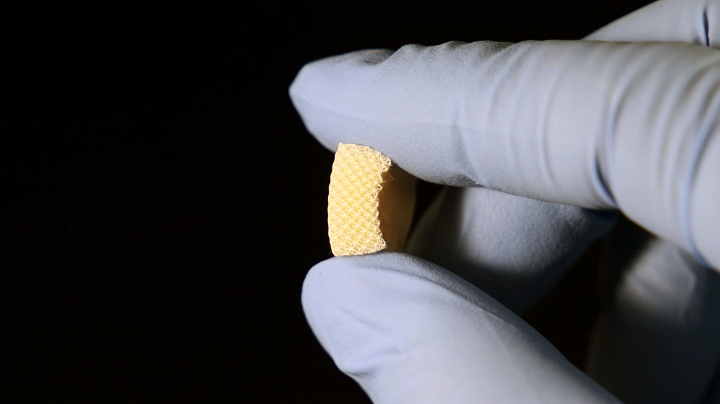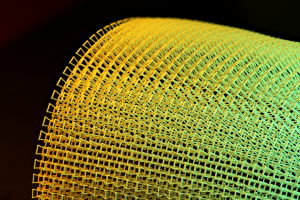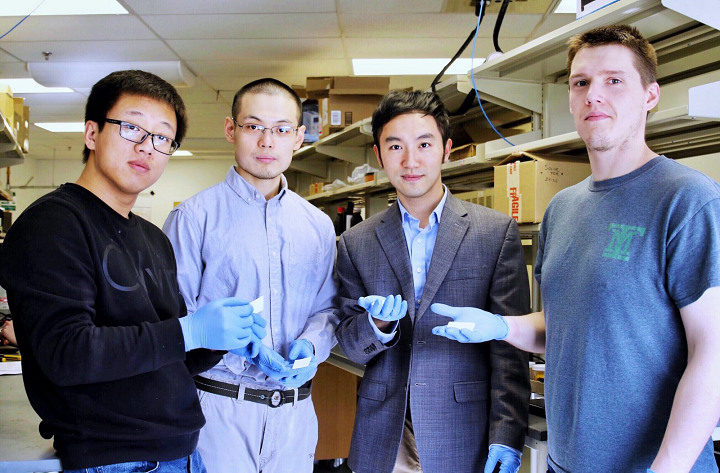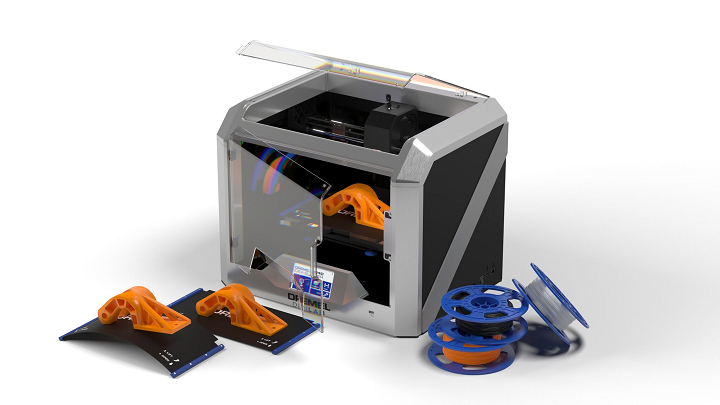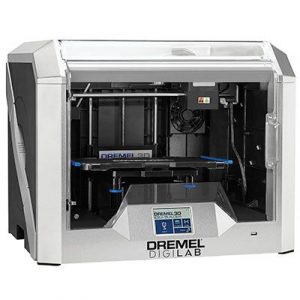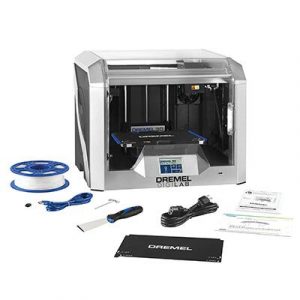Desktop Metal Raises $438 Million Total With Additional $160 Million Round What Does It Mean?
Desktop Metal is becoming quite the VC darling. The Massachusets based metal printing firm has now raised a total of $438 million by virtue of its latest funding round of $160 million. This round led by Koch Industries’ Disruptive Technologies investor gives the company a valuation of over $1.5 billion.

Desktop Metal CEO Rik Fulop said that,
“We are at a critical juncture in the advancement of metal 3D printing and additive manufacturing. We are excited about Koch being an investor, customer and capability provider in this round. This new funding will fuel the continued development of our metal 3D printing technology and rich product roadmap, the scaling of operations to meet a growing demand of orders, and the financing of major new research and development initiatives. Combined, this will set us on a trajectory to become a global leader in metal 3D printing, a key pillar of Industry 4.0.”
While Chase Koch of Koch Disruptive Technologies stated that,
“Desktop Metal’s 3D printing solutions can redefine prototyping and mass production of metal products, which has profound disruptive implications for manufacturers like Koch Industries.” “We are very bullish about the prospects of Desktop Metal, not just as an investor, but also as a customer and partner.”
What is significant about this?
KDT’s investment is notable in size but also notable in that other firms such as Ford and GE have invested in the firm as well. Especially in 3D printing, we are starting to see an outsized impact from manufacturing/industrial companies and their venturing arms. Companies such as Stanley Black and Decker are even collaborating on funding series of firms. That 3D printing will be a disruptive force in industry is well understood by us inside the industry but is becoming more commonplace outside of it also.

Many believed that the mighty Desktop Metal engine was running on fumes so this investment is timely, to say the least. It propels Desktop Metal to new heights. If they can unlock all of this capital then they can easily outspend much larger established 3D printing companies in R&D for example.
HP is a behemoth and one could easily assume that they would have the reach and resources to be outspending everyone in the metal printing race. This investment clouds this for the near term and could give Desktop Metal edge.
This kind of investment should also mean that MarkForged could seek more capital if it wants to engage in an arms race with Desktop Metal.
Will companies such as Xjet and Exone also increasingly target more desktop machines in order to not have a kind of Innovator’s Dilemma problem and be surpassed from below?
Rik Fulop’s mastery in obtaining cash could give the company a huge war chest to see of new competition in inkjet while keeping established firms at bay.
What does this not change?
Binder jetting metal or FDM combined with wax/polymer metal is not a race that is run. It is also not a filter for my phone pictures or a social network. We’re talking about very difficult hardware, materials and software challenges that have yet to be solved.
Acceptance is key in 3D printing and people are buying machines to help them in an organized way manufacture. Hype will fan the flames but peter out if the performance is not there.
So in adoption, there will be challenges in scaling the Desktop Metal service offering and the quality, output, and yield of machines over time. A lot of capital will have to be deployed there or partners will have to pick up the slack in service at least.
The MIM industry has been trying to solve shrinkage rates on injection molded metal parts for decades. They have not been able to do so successfully. In testing parts I’ve always remained skeptical of binder jetting metals or in wax/polymer FDM for metals. I predict that shrinkage differences in part size, across wall thicknesses and geometries, will continue to be problematic for users.
Distortion on parts, stringing, misprints in the FDM step are also potential issues with the Desktop Metal process.
This well-capitalized company with a lot of candle power is also up against Xjet which has a wealth of inkjet knowledge and one of the global homes of Inkjet prowess HP. Meanwhile, Markforged continues to grow hard making this binder jetting metals space a very competitive one.
There are however other inkjet patent heavy firms that may see this investment as an enticement to also make a similar system. It also may deter them.
GE will join this space, but who else will as well?
As well as companies that are working with similar technologies we have Digital Alloys and other new entrants that are also playing in this space.
People often forget that DLP and SLA machines make tens of millions of metal cast parts as well per year. Could increased automation make these systems competitive for many types of shapes as well?
Will Fused Deposition Modeling companies look more towards looking to metalized filaments for creating similar parts than Desktop Metal can make?
We will need to verify part densities, repeatability and how these parts function in the real world to really know how productive either Studio or larger production units can be for firms.
Will many companies continue to bet on HP because they have an established name? Or will Desktop Metal be able to parlay this move into inertia and inevitability?
The company has repeatedly missed launch deadlines and implementation dates with customers.
Experience with part production by others is very limited with Desktop Metal systems. There are few verifiable metal printed parts available at client sites and there is little data on the real world performance of Desktop Metal systems.
Outlook
Investors seem to believe that the inexpensive metal printing opportunity is huge and that it may be winner takes all. Is it though? It is far too early to tell but I would assume that many tens of thousands of factories and design firms worldwide would profit from having on-site tooling and parts in metals. In prototyping, bridge manufacturing, tooling, and unique parts this could mean that we have thousands of machines as an opportunity. How many of those firms want the staff to do the debinding and sintering in house? If we add the labor cost, and the trouble will we really all have machines on site? Companies now don’t do their own HR and IT but Bob is going to get a room to print parts in on site?
This in my mind is a real unknown and would really depend on what the local metal printing service offering is and what parts people need when. How many have the right volume in parts to warrant this specific system? Yes, pizzas are the future but where and when will I opt for Dominos and when to make my own pizza? I’m confident that inexpensive metal parts for industry is a huge potential segment but what will be the form factor and throughput of machines in this area?
All in all I think that the hype in this particular area is over-optimistic money wanting desperately to plant a flag somewhere. There is an opportunity but this opportunity is not as self-fulfilling as it is in online video or social networks. There are fundamental complexities with binder jetting metals/extrusion with polymer metal filaments that will continue to be challenging. Desktop Metal has not demonstrated that they meet these challenges in real-world production. At the same time, many FDM firms could attempt something much less expensive that does work for a certain set of customers. I’m not convinced that Desktop Metal has the crown planted firmly on its own head at the moment. If the team continues to outperform and executes well in the year to come however then they could turn themselves into the company in pole position in metals.
Altraspin Sub-Micron 3D Printer Launched by Microlight3D
France-based Microlight3D, a company that specialises in high resolution machines, has launched their latest device. Their Altraspin sub-micron scale printer comes with a compact design and wide variety of material options. As the name suggests, it’s great for micro-parts with complexity, especially for microbotics, labs and clean rooms. “Microlight3D designed Altraspin to respond to manufacturing […]
The post Altraspin Sub-Micron 3D Printer Launched by Microlight3D appeared first on 3D Printing.
Empa cellulose 3D printing advances yield guidelines for composite material tuning
Protolabs adopts high-performance metal alloys for aerospace-grade 3D printed parts
ORNL Polyester and Vinylester as Possible Materials for Large-Scale 3D Printing
In a paper entitled “Vinylester and Polyester 3D Printing,” researchers at Oak Ridge National Laboratory (ORNL) teamed up with researchers from Polynt Composites USA to evaluate the feasibility of 3D printing vinylester and polyester materials. The two organizations worked together to assess Polynt base material chemistries for large scale polymer additive manufacturing.
The project consisted of three tasks: rheology and reaction kinetics; solvents, build sheets and safety analysis; and proof of concept demonstration.
“The printability of polyester or vinylester resins is driven primarily by the rheology and reaction kinetics of the polymers,” the researchers state. “These properties can be controlled through chemistry modification and by incorporating additives. The ability to control these properties distinguishes reactive additive manufacturing(AM) from thermoplastic AM, which is driven largely by temperature gradients that can’t be controlled. Polymers tested in Phase 1 of this project had viscosity of 300-700 centipose (cP), with reaction times ranging from 9 to 40 minutes.”
The researchers then evaluated safety considerations for the large scale 3D printing of vinylester and polyester materials. Some of the main concerns addressed involved explosion and health and safety properties of styrene. Low cost Mylar sheets were used for the first phase of the project, and acetone was used for the cleaning of the equipment.
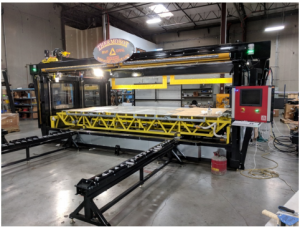 As a proof of concept, the researchers used a Thermobot from Magnum Venus Products to 3D print demonstration articles to show the feasibility of printing vinylester and polyester materials. Quasi-status tensile tests were performed on the 3D printed items for both the X and Z axes. Results showed that this new class of reactive polymers will outperform existing thermoplastic materials used for large scale additive manufacturing. Also, the reduction of properties from print direction (X) to build direction (Z) is only 29 percent, a less significant decrease than for most thermoplastic materials.
As a proof of concept, the researchers used a Thermobot from Magnum Venus Products to 3D print demonstration articles to show the feasibility of printing vinylester and polyester materials. Quasi-status tensile tests were performed on the 3D printed items for both the X and Z axes. Results showed that this new class of reactive polymers will outperform existing thermoplastic materials used for large scale additive manufacturing. Also, the reduction of properties from print direction (X) to build direction (Z) is only 29 percent, a less significant decrease than for most thermoplastic materials.
“Standard toolpath planning strategies were adopted from thermoplastic printers,” the researchers continue. “However, it was demonstrated that materials evaluated in this project allowed greater freedom in toolpath planning since it was possible to cross a previously deposited bead without stopping and pausing the print. Eliminating stops at bead cross-overs will result in significant time savings and possibly an improvement in the mechanical properties of printed structure.”
Overall, the project showed that polyester and vinylester materials are promising for large scale additive manufacturing.
“High strength values compared to existing thermoplastic additive material have been demonstrated along with less than 30% reduction in Z strength compared to print direction strength,” the researchers conclude. “These materials require no energy input during printing and have been shown to offer increased freedom in toolpath planning. Additionally, carbon fiber, or other additives with low coefficients of thermal expansion, are not required to achieve large scale prints, presenting the possibility of introducing low cost materials for large scale AM.”
The researchers successfully met their goals in Phase 1 of the project, demonstrating the feasibility of using polyester and vinylester for large scale additive manufacturing. The next step is to achieve taller builds and optimize material properties for consistent deposition with available equipment. The researchers believe that these materials could be used in applications requiring strength beyond the reach of existing thermoplastic 3D printing materials.
Authors of the paper include John Ilkka, Steve Voeks, John Lindahl and Vlastimil Kunc.
Discuss this and other 3D printing topics at 3DPrintBoard.com or share your thoughts below.
Virginia Tech Researchers Using a New Method to Create 3D Printed Piezoelectric Materials
Originally discovered in the 19th century, piezoelectric materials, which convert stress and strain into electric charges, are in everything from musical greeting cards to cell phones. Piezoelectricity is electricity that results from pressure, and thanks to a new 3D printing method created by a group of researchers and mechanical engineers from Virginia Tech University, it may be possible to 3D print these types of materials in order to develop things like self-adaptive infrastructures and transducers, tactile sensors, and intelligent materials.
These materials are inherently brittle, as they’re made up of ceramic and crystal. They come in just a few shapes, and can only be manufactured in a clean room, so their potential hasn’t been explore too much, especially not in the 3D printing industry. But Xiaoyu ‘Rayne’ Zheng, a member of the university’s Macromolecules Innovation Institute and an assistant professor of mechanical engineering in the College of Engineering, and the rest of his team determined a new way to 3D print piezoelectric materials so they’re not restricted by shape or size, and can be custom-designed to convert stress, movement, and impact from any direction into electrical energy.
The team explains their research further in a paper, titled “Three-dimensional printing of piezoelectric materials with designed anisotropy and directional response,” which was recently published in the Nature Materials journal. Co-authors of the paper are Huachen Cui, Ryan Hensleigh, Desheng Yao, Deepam Maurya, Prashant Kumar, Min Gyu Kang, Shashank Priya, and Zheng.
Zheng, who has experience in 3D printing at both the nanoscale and microscale, and his team created a model that lets them “manipulate and design arbitrary piezoelectric constants,” which ends in the material responding to incoming forces and vibrations and generating, and moving, an electric charge, through a set of 3D printable topologies. This allows users to not only prescribe, but also program, voltage responses to be reversed, magnified, or suppressed in any direction.
“We have developed a design method and printing platform to freely design the sensitivity and operational modes of piezoelectric materials. By programming the 3D active topology, you can achieve pretty much any combination of piezoelectric coefficients within a material, and use them as transducers and sensors that are not only flexible and strong, but also respond to pressure, vibrations and impacts via electric signals that tell the location, magnitude and direction of the impacts within any location of these materials,” Zheng explained.
Natural crystals play a role in the manufacturing of piezoelectrics, as the orientation of atoms are fixed at the atomic level. The researchers created a substitute that mimics the crystal, but at the same time makes it possible to alter the lattice orientation.
“We have synthesized a class of highly sensitive piezoelectric inks that can be sculpted into complex three-dimensional features with ultraviolet light,” Zheng said. “The inks contain highly concentrated piezoelectric nanocrystals bonded with UV-sensitive gels, which form a solution — a milky mixture like melted crystal — that we print with a high-resolution digital light 3D printer.”
The 3D printed piezoelectric materials were demonstrated at a tiny scale, which measures just fractions of the diameter of a single human hair.
“We can tailor the architecture to make them more flexible and use them, for instance, as energy harvesting devices, wrapping them around any arbitrary curvature. We can make them thick, and light, stiff or energy-absorbing,” said Zheng.
“We have a team making them into wearable devices, like rings, insoles, and fitting them into a boxing glove where we will be able to record impact forces and monitor the health of the user.
The material is five times more sensitive than flexible piezoelectric polymers, and it’s possible to tune and produce its shape and stiffness as a block or a thin sheet.
Priya, the Associate VP for Research at Penn State and a former professor of mechanical engineering at Virginia Tech, said, “The ability to achieve the desired mechanical, electrical and thermal properties will significantly reduce the time and effort needed to develop practical materials.”
The researchers have kept busy 3D printing the material and demonstrating its applications as smart materials used to harvest mechanical energy, wrap around curved surface, and convert motion. But even beyond consumer electronics and wearables, Zheng believes their work could be used in robotics, tactile sensing, and intelligent infrastructure. Then, structures could be completely made of piezoelectric material, so they can sense, monitor, and locate vibrations, motions, and impacts.
In order to demonstrate their material’s applicability for sensing the locations of dropping impacts, while also absorbing impact energy, the team 3D printed a small smart bridge. Additionally, they created a smart transducer that can convert underwater vibration signals to electric voltages.
“Traditionally, if you wanted to monitor the internal strength of a structure, you would need to have a lot of individual sensors placed all over the structure, each with a number of leads and connectors. Here, the structure itself is the sensor — it can monitor itself,” said Cui, a doctoral student with Zheng.
[Source: Science Daily]
Discuss this and other 3D printing topics at 3DPrintBoard.com or share your thoughts below.
The Barnes Group Advisors Licenses Educational Material to South African Start-Up
 The Barnes Group Advisors is a global Additive Manufacturing Engineering Consultancy working toward industrializing the technology. Part of its services include training in additive manufacturing with what it calls its Activate AM training portfolio, and this week the company announced that it has signed an intellectual property agreement providing South African startup Tiziri Advanced Manufacturing Technologies (TiziriTech) with access to its Activate AM teaching materials. TiziriTech now has a license to use the Barnes Group’s training materials to facilitate onsite training workshops for customers in Africa and the Middle East.
The Barnes Group Advisors is a global Additive Manufacturing Engineering Consultancy working toward industrializing the technology. Part of its services include training in additive manufacturing with what it calls its Activate AM training portfolio, and this week the company announced that it has signed an intellectual property agreement providing South African startup Tiziri Advanced Manufacturing Technologies (TiziriTech) with access to its Activate AM teaching materials. TiziriTech now has a license to use the Barnes Group’s training materials to facilitate onsite training workshops for customers in Africa and the Middle East.
 The agreement allows TiziriTech access to all materials in the Activate AM portfolio, including Discover AM, an additive manufacturing essentials course; Focus AM, a technology and materials course; Accelerate AM, a design course; Empower AM, a business and economics course; and more. Africa and the Middle East will now be able to see faster growth of additive manufacturing through education and will be able to use local resources to accelerate the technology.
The agreement allows TiziriTech access to all materials in the Activate AM portfolio, including Discover AM, an additive manufacturing essentials course; Focus AM, a technology and materials course; Accelerate AM, a design course; Empower AM, a business and economics course; and more. Africa and the Middle East will now be able to see faster growth of additive manufacturing through education and will be able to use local resources to accelerate the technology.
“We are anxious to contribute to the global expansion and adoption of AM, and we recognize there are different answers for different parts of the world,” said Alison Wyrick Mendoza, Business Leader for Training Services, The Barnes Group Advisors. “The TiziriTech team has requisite technical experience, a strong local network, and extensive language skills. Learning about AM is one thing, hearing it in your own language is another.”
TiziriTech’s Malika Khodja has especially far-reaching language skills, having been born in Algeria and now living in South Africa. Khodja speaks fluent Arabic, French, English and Afrikaans.
“I am excited to use my proficiency in languages to communicate with people from the region to help develop additive manufacturing,” Khodja said.
Additive manufacturing is growing in Africa and the Middle East, but to accelerate and spread that growth, more far-reaching and thorough training and education is needed.
“In order for additive manufacturing to grow in Africa and the Middle East, it is imperative to improve human capital development through training and research,” said Hein Moller, Director, Tiziri Advanced Manufacturing Technologies. “As well, The Barnes Group Advisors offer training courses based on customer requirements. Since the Africa and Middle East region is vast, with many different training needs, it makes TBGA the logical option to use.”
The Barnes Group Advisors and TiziriTech both believe that high-quality additive manufacturing training will increase the degree of maturity in the Africa and Middle East region and will help local industries develop additive manufacturing products that are suitable for growth and production. The technology has the potential to stimulate economic growth in the region and contribute to the overall well-being of the population.
“This agreement expands on our mission to build effective partnerships for sustainable AM development,” said John Barnes, Managing Director, The Barnes Group Advisors. “I’m also personally excited to help another entrepreneurial team.”
Discuss this and other 3D printing topics at 3DPrintBoard.com or share your thoughts below.
Dremel Introduces Newest Addition to DigiLab 3D Printing Family: the 3D40 FLEX 3D Printer
Popular power tool company Dremel, a wholly owned subsidiary of the Robert Bosch Tool Corporation, has been in business for 85 years, due in large part to its commitment to innovation in technology. This week, the company expanded its growing DigiLab family of 3D printers with a strong new addition – the 3D40 FLEX. The debut of this latest 3D printer, which was specifically designed to provide educators and makers with a seamless digital fabrication experience, was announced yesterday.
“We’ve seen a lot of use and success with our previous 3D printer models. As we continue to learn about digital fabrication, it’s important to introduce new innovations to better suit the classroom and makerspace settings. This is what led us to 3D40 FLEX,” explained John Kavanagh, the President of Dremel.
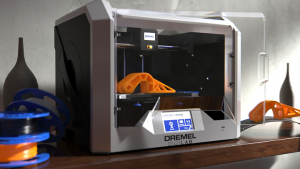 Dremel listened to its customers and learned from their past experiences while working to develop its new 3D40 FLEX 3D printer. It comes with a wide range of new features – including a flexible build plate that users will definitely appreciate for the safer, faster, and easier parts removal it can ensure. This issue is one of the most common problems that challenge 3D printer users, so having a workaround like a flexible build plate will be extremely helpful.
Dremel listened to its customers and learned from their past experiences while working to develop its new 3D40 FLEX 3D printer. It comes with a wide range of new features – including a flexible build plate that users will definitely appreciate for the safer, faster, and easier parts removal it can ensure. This issue is one of the most common problems that challenge 3D printer users, so having a workaround like a flexible build plate will be extremely helpful.
Another new feature offered by the new 3D40 FLEX is its ability to print 30% faster when in draft mode, in order to accommodate more users and maximize how much the machine is utilized. This speed setting makes it the perfect 3D printer for environments that need continuous run time and quick turnaround to increase its operational usage – such as makerspaces, or in a school classroom, for example.
“The Dremel DigiLab 3D40 FLEX 3D Printer will help with complex and practical applications, perfect for educational usage. It’s a safe, reliable option for Makers of all ages and skill levels and incorporates a lot of smart design elements to enrich the experience,” Kavanagh said.
The company has always prioritized the use of 3D printing in education, so the company hopes that the new Dremel DigiLab 3D40 FLEX would fit perfectly into the classroom.
The DigiLab 3D40 FLEX 3D printer, with a build volume of 10″ x 6″ x 6.7″, also has an improved capability in its higher resolution which allows the system to better print more intricate features, such as arches, diagonals, engravings, organic forms, and small details. It’s fully enclosed, which helps with its quiet operation, comes with a clog-resistant extruder, and is also WiFi-enabled for remote 3D printing and monitoring. Additional features include:
- UL-certified and rigorously tested to ensure safety
- Cloud-based 3D printing software
- Semi-automated leveling
- USB input for file transfers
- Automatic 9-point calibration
- Full color LCD touchscreen
- 1-year warranty
- Lifetime customer support
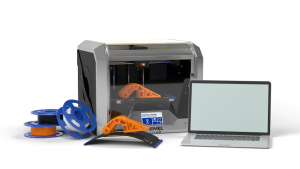 Any educators who are interested in project-based, hands-on learning opportunities, Dremel also provides an offering that’s focused on education, which features both the Dremel DigiLab 3D45 3D printer and the new 3D40 FLEX 3D printer.
Any educators who are interested in project-based, hands-on learning opportunities, Dremel also provides an offering that’s focused on education, which features both the Dremel DigiLab 3D45 3D printer and the new 3D40 FLEX 3D printer.
Additionally, users will also receive access to 30 standard lesson plans for students ranging from third to 12th grade, as well as a four-hour professional development course.
Starting next month, the Dremel DigiLab 3D40 FLEX will be available at select retailers, and online, for MSRP $1,299.
Discuss this story and other 3D printing topics at 3DPrintBoard.com or share your thoughts below.
[Images provided by Dremel]
Researchers Print Piezoelectronics With Minimum Restrictions
Originally discovered in the 19th century, piezoelectric materials have made their way into everything from cellphones to printers. Since these crucial technologies have so much riding on them, it can be frustrating that they require controlled production conditions. Consequently, creators run up against limits in terms of shape, size, resources and heavy use of a […]
The post Researchers Print Piezoelectronics With Minimum Restrictions appeared first on 3D Printing.



